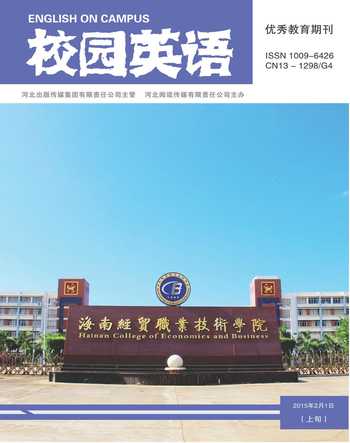On Translation and Comparison of Color Words between Chinese and English Culture
【Abstract】Color words are frequently used both in Chinese and English.A lot of color words are produced under special historical and geographical background.And the same terms of color in these two languages may have different cultural association.This article focuses on discussing the similarities and differences of color words in different cultural fields to help people to have a better understanding of different colors.
【Key words】color; culture; Chinese and English
1.Introduction
Among Chinese and English there are plenty of color words to show different meanings and present different feelings.We should not only pay attention to the meaning of the surface but also focus on the literal conception widely.For different symbolism have different features.Even some features have taboo and admiration after they have been transformed.
2.Similarities and Differences of Color Words between Chinese and English.
2.1 Red
2.1.1 Similarity between Chinese and English.Red symbolizes happiness,pleasure and blessing both in China and English –speaking countries,hence there are lots of similarities in using it.It often refers to success and importance.The phrase “give somebody a red carpet of reception” means make a warm welcome to some important person.Red also shows health and in good condition,for example,we usually describe a bridegroom like “a face as red as a rose”,which means people encounter a great time,he or she will be in high spirit.
2.1.2 Differences between Chinese and English.In China,red is always associated with joy,good luck and happiness.Almost everyone like and admire it,who think this color will bring them good things,however,in English,red may associated with blood,disaster,war,anger ,violence even some special terrorist groups.For instance,“red light district”,as we all know it refer to whorehouse.And the “red card” is widely used to punish players who act badly in sports and games.
2.2 Black
2.2.1 Similarities between Chinese and English.Black is not a good word both in Chinese and in English .It is often used to express one`s anger or some evil things.When black is plus with a noun,it often means a bad thing ,such as “black market”,“black heart”,“black money”,“black sheep” etc,all these new phrase can be directly translated into Chinese.
2.2.2 Differences between Chinese and English.In China,since the pre-Qin period,青stands for the color of blue,green and black.So it has several meanings of different colors.The example can be seen in poet of Libai “朝如青絲暮如雪”,“青丝” means black hair ,similar usages are in “青砖”(black brick),etc.“青”also refers to green,for example,“青山绿水”(green hills and blue waters)“青椒”(green pepper).however,in English black do not involve the meaning like Chinese.
2.3 Yellow
2.3.1 Similarity between Chinese and English.Yellow,the color of gold,corn,lemon and the ray of sunshine,from ancient to now,many artists have been using yellow to show harvest and achievement.When autumn is coming,the leaves turn yellow in which the authors will also show special emotion to this season and weather.Such as the leaves color changes from yellowish green to dark green.
2.3.2 Difference between Chinese and English.In Chinese,yellow originally represents the color of soil,which is related to pornographic,such as “黄色电影” If we translate these phrases into yellow movie and yellow book,it will be strange.
In Webster`s Dictionary of English Language,yellow is explained as the color of gold and butter.In China,yellow is an honorable color,connected with honor and glory,it is the symbol of power and lofty.That is why Chinese people call them “炎黄子孙”.But in English-speaking countries,it is “purple” that usually associated with “imperial” or “power” in particular.
3.Conclusion
The symbolism of color differs greatly from culture to culture,basically speaking in Chinese it is based on the traditional culture,which is pristine and superstitious.All colors are full of political meanings,whereas western culture is open-minded.In a word,different symbolism of color in various cultures indicates the development of society which is a permanent cultural phenomenon and let the language it described more vivid and humorous.
參考文献:
[1]Jean Delis等.翻译研究关键词[M].北京外语教学与研究出版社,2004.
[2]王玉平.论英汉颜色词翻译的不同[J].山西广播电视大学学报,2006,10.
作者简介:
徐艳丽 (1981.11—)女,内蒙古赤峰人,研究生,讲师,研究方向:翻译理论与实践、跨文化交际。

